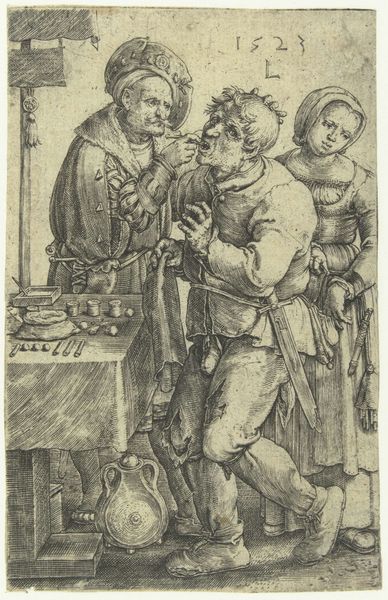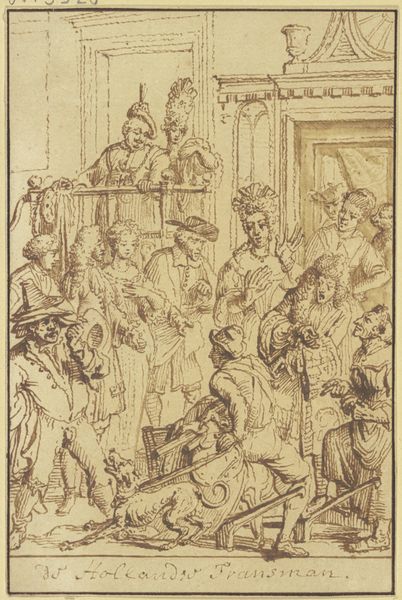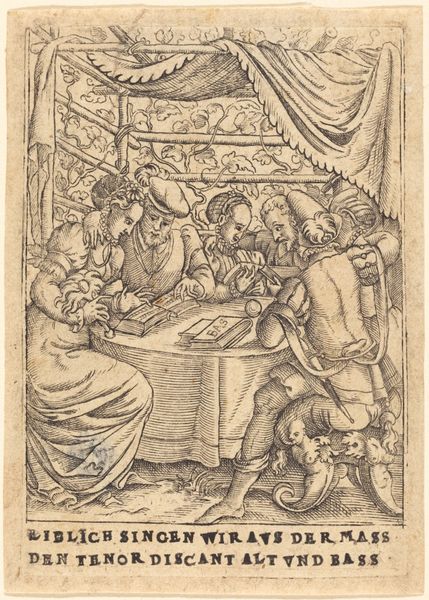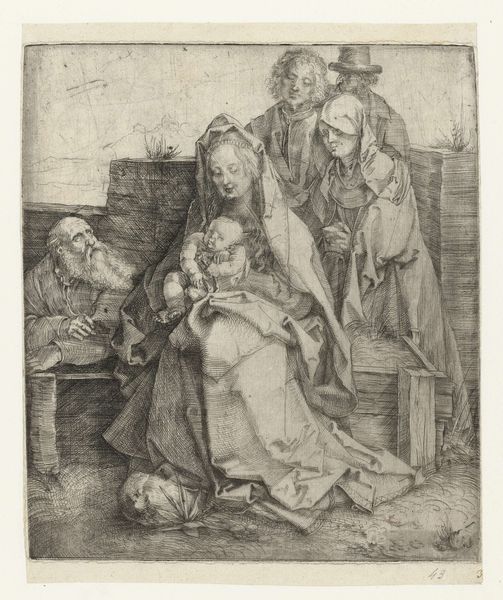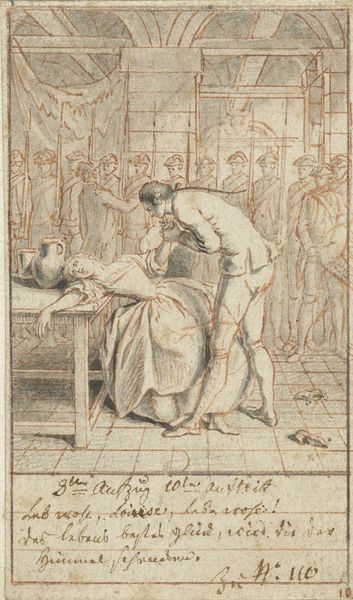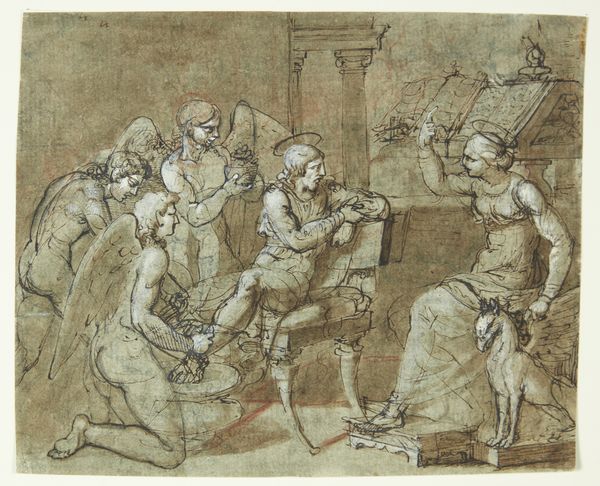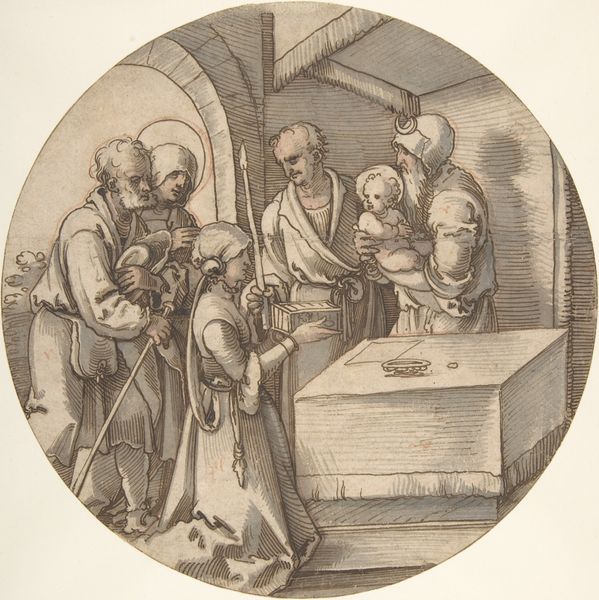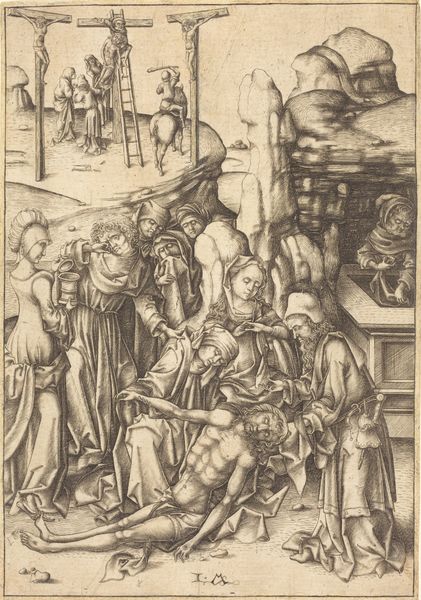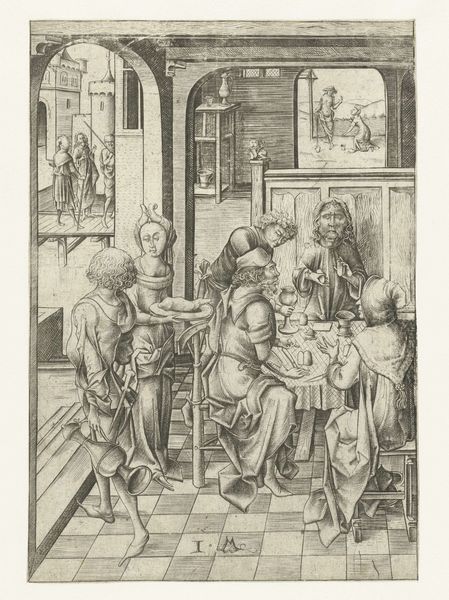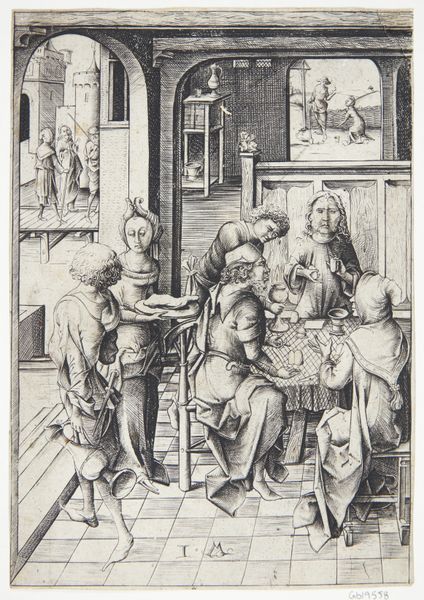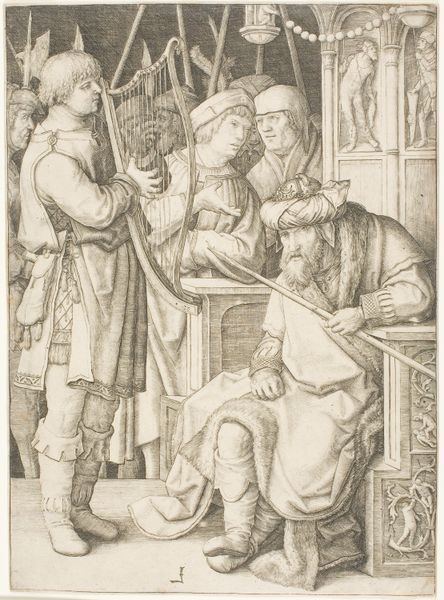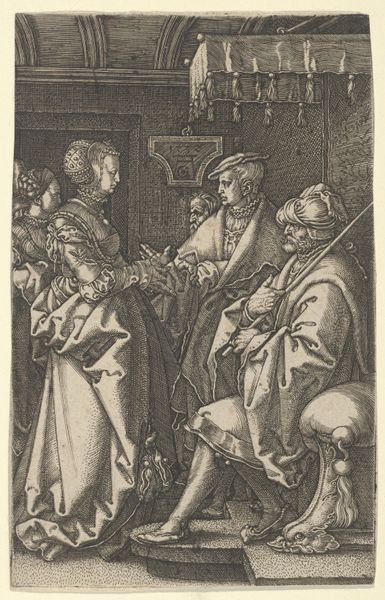
Architect in His Study Holding a Compass and Conversing with Three Men 1600 - 1700
0:00
0:00
drawing, print, ink
#
drawing
# print
#
figuration
#
ink
#
men
#
history-painting
#
italian-renaissance
Dimensions: 8 x 5 1/16in. (20.3 x 12.8cm)
Copyright: Public Domain
Editor: Here we have a drawing titled "Architect in His Study Holding a Compass and Conversing with Three Men," made with ink. It's attributed to Agostino Tassi and dates from around 1600 to 1700. It strikes me as a rather formal and serious scene, with a distinct air of Renaissance intellectualism. What do you see in this piece? Curator: The architect's compass is crucial, of course. Throughout history, the compass hasn't simply been a tool; it is a potent symbol, one loaded with associations. From antiquity onwards it’s featured as an attribute of divine creators, seen as instruments for establishing order, harmony and, crucially, morality. Even now, can you imagine the echoes such a symbol might have carried? Editor: So it's more than just architectural planning, then. What kind of morality? Curator: Exactly! Think about the period: a period steeped in classical ideals and the humanist belief in humanity's capacity for reason. The compass in the architect’s hand isn't only constructing buildings, it’s building society; drawing, not just lines on parchment, but blueprints for the perfect social order. A perfectable future society in an era beset by conflict. Look at the men around him. They lean in to listen, intently. Editor: That's interesting, given that the architecture in the background is highly ornamented and somewhat chaotic. A vision in need of refinement, perhaps? Curator: Precisely. It could be viewed as both the foundation and the challenge – the current, flawed world needing to be shaped according to divine principles, using both knowledge and the architect's inherent sense of moral and societal vision. It provides a fascinating view of art's cultural role. Editor: That’s given me a completely new perspective on what I first saw! It really highlights how images, like this, accumulate layers of meaning over time.
Comments
No comments
Be the first to comment and join the conversation on the ultimate creative platform.
